
Machu Picchu is located 120 km from Cusco, Peru, nestled in a mountainous cradle, bathed by the Vilcanota River, and surrounded by a serene, magical landscape that makes it one of the most stunning architectural monuments in the world.
At an altitude of 2,400 meters above sea level (MAMSL), Machu Picchu is also regarded as a place of vital energy. It is admired for the solidity of its construction, the balanced use of space, and its harmonious integration into the natural environment.
Machu Picchu is an impressive Inca citadel in Peru. The city lies high on a mountain, formerly called Picchu by the inhabitants of the area, nestled between two peaks: Huayna Picchu and Mount Machu Picchu. Machu Picchu is a Quechua word meaning "old mountain". Quechua was the language of the Incas and remains one of the official languages in Tawantinsuyo - the "Land of the Four Regions". In the Inca Empire, the regions were known as Tawa (four) and Suyo (region). These regions were Continsuyo, Antisuyo, Chinchaysuyo, and Coyaasuyo.
In the 15th century, the Incas built their city in this remote and inaccessible area. The Incas were the most powerful civilization in South America until Spanish conquistadors arrived and subdued them. The citadel of Machu Picchu clearly shows that the Incas were intelligent and highly skilled builders. Despite standing for over 500 years in an environment with harsh conditions, including frequent earthquakes and heavy rains that could wash away entire villages, the structures remain impressively intact. The Incas constructed ingenious agricultural terraces along the mountain slopes that allowed rainwater to drain efficiently while creating arable land for growing corn and other crops. The buildings were made of perfectly fitting blocks of stone, assembled without mortar. This technique allowed the structures to shift slightly during earthquakes without collapsing.
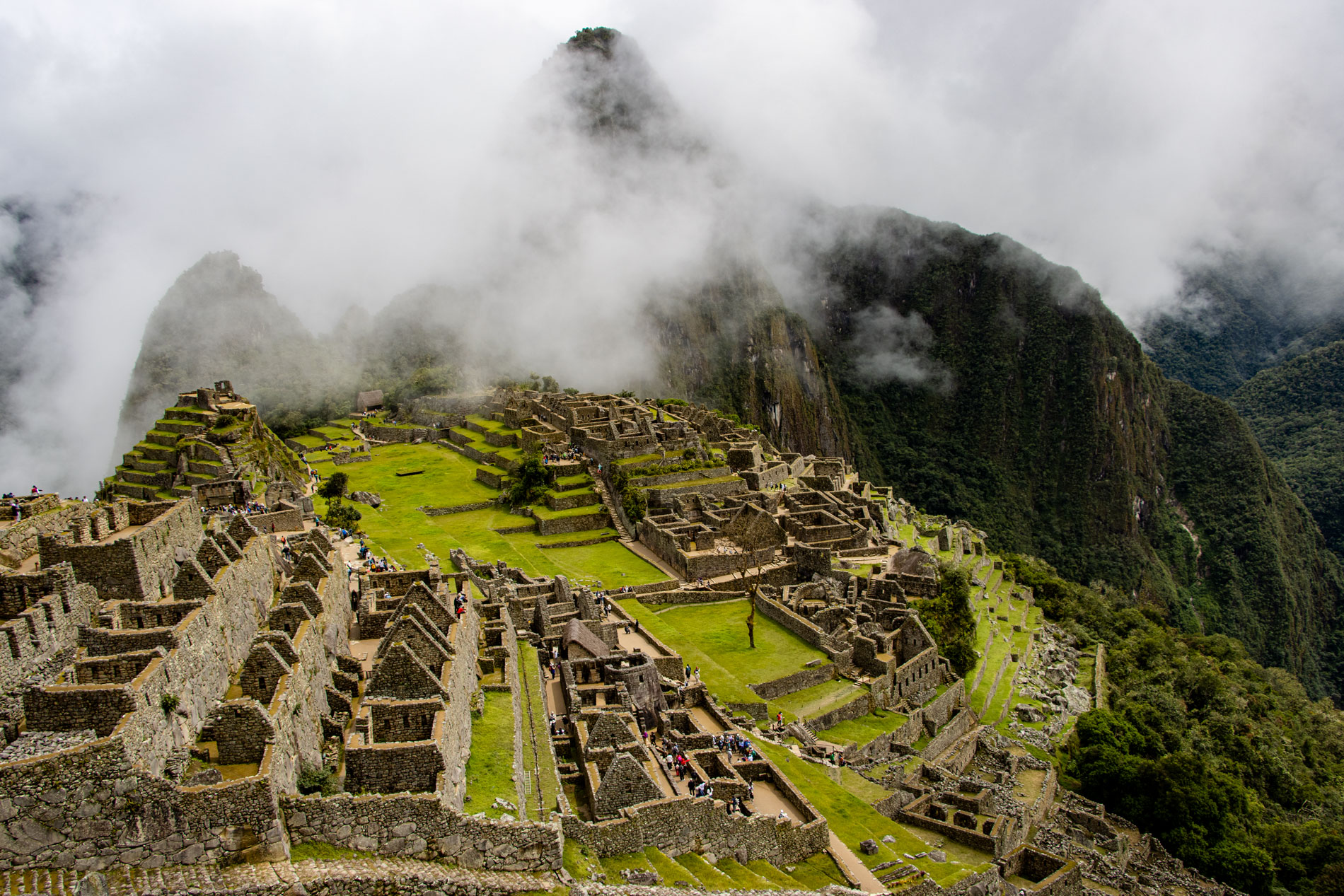 |
Machu Picchu Peru: Discover the Lost City of the Incas |
Researchers continue to debate what Machu Picchu was originally used for. It was probably not abandoned by accident, but rather by an organized process. This is suggested by the absence of artifacts that would typically reflect daily Inca life or customs - only the stone structures remain. Archaeological discoveries are ongoing, and many theories suggest that Machu Picchu may have served as an astronomical observatory, among other purposes. The sun was particularly important to the Incas, whose rulers considered themselves descendants of the Sun God - Inti. In addition to the sun, they also worshipped natural elements such as water and earth. Understanding the sun's movement was essential to tracking the seasons, and several of the existing structures are believed to have been used to observe the solstices.
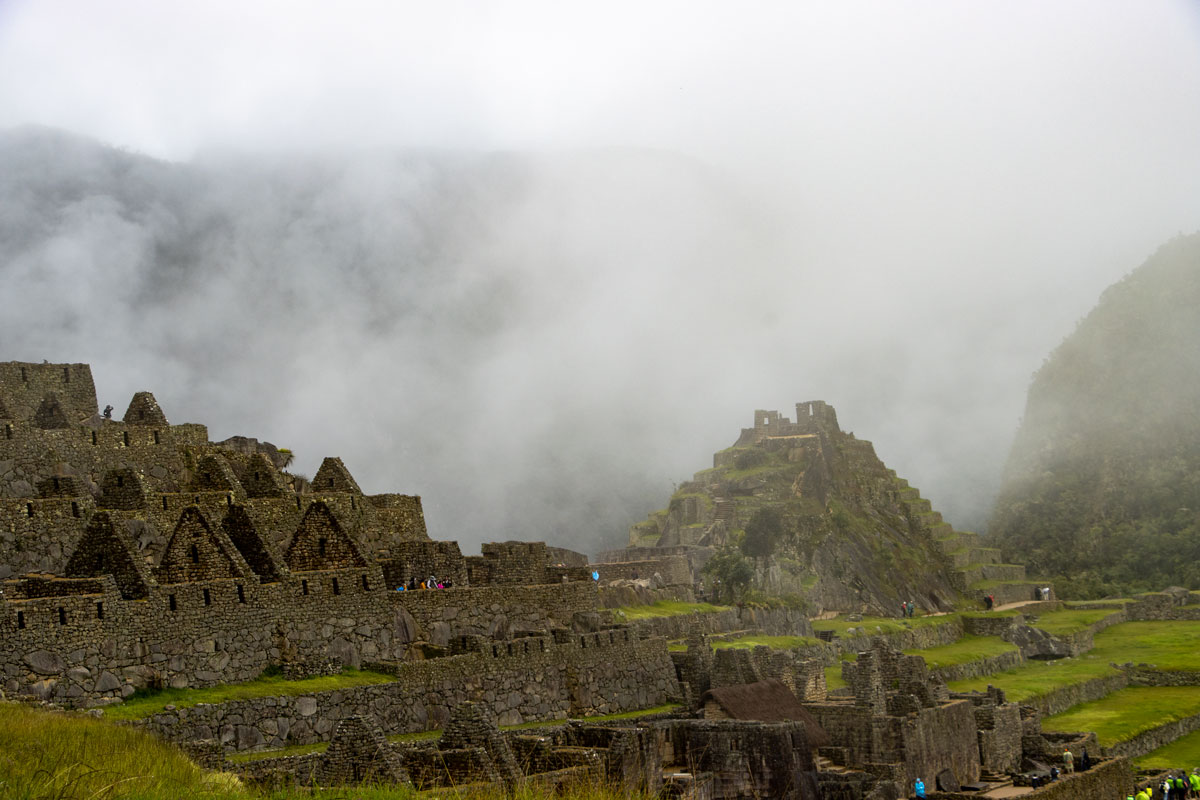 |
Machu Picchu |
Today, Machu Picchu is one of the most popular tourist destinations in the world. So many people want to visit, despite the challenging climb, that the Peruvian government has implemented regulations to limit the number of daily visitors. Many local residents rely on tourism for income, but there is growing concern about the environmental impact. Machu Picchu is a UNESCO World Heritage Site and will continue to be protected for future generations.
114 years ago today, on July 24, 1911, American archaeologist Hiram Bingham discovered an enchanted city high in the Andes Mountains of Peru: Machu Picchu (pronounced Matschu Piktschu, meaning "Old Mountain"). The city was overgrown with vines and covered with moss. It had been built by the Incas more than 500 years ago and had room for well over 1,000 people. The Incas were a people who ruled a vast empire in what is now Peru in South America.
Bingham was on a mission for his university to search the dark mountain forests for traces of the lost Inca culture. In the 16th century, Spanish conquistadors in the Americas had destroyed the Inca empire and erased many traces of their buildings and culture. There had long been rumors of a magnificent place far in the mountains where the Incas were said to have sought refuge from the conquerors.
The local people have known these ruins for a long time, as in 1902 Juan Lizárraga left an inscription in the Temple of the Windows as proof of his presence there.
Machu Picchu consists of two main areas:
When Hiram Bingham got, to the Vilcanota Valley (Sacred Valley of the Incas ), in the intertwined vegetation of mandorpampa, the farmer Melchor Arteaga told him that, way up there, on Machu Picchu Mountain, there were important architectural remains and that, in order to reach them, one would have to climb up slopes covered by thick vegetation, Binghan listened, skeptical, as he was aware of innumerable myths that ran about lost citadel in Peru. But finally, he ended up making his decision and insisted in being taken to the mentioned remains. Once on top one of the children of the two families who lived on these mountains, accompanied binghan to the site where these impressive constructions laid covered by thick tropical vegetation, abandoned for centuries.
It is not known who exactly commissioned the construction of Machu Picchu, located at an altitude of over 2,400 meters. The Incas had no writing system and left no records. Even the original name of the city is unknown - the name "Machu Picchu" was given later by the local inhabitants of the area.
For a long time, people puzzled over how the Incas transported the large, intricately carved blocks of stone to this remote location on a high plateau between densely forested mountains. Today, after many excavations, most of the mysteries surrounding the city have been revealed. Experts can explain how this magnificent city-with its complex irrigation system, temples, and stately homes-was built. But no one can say for sure why the city was built in such a grand manner.
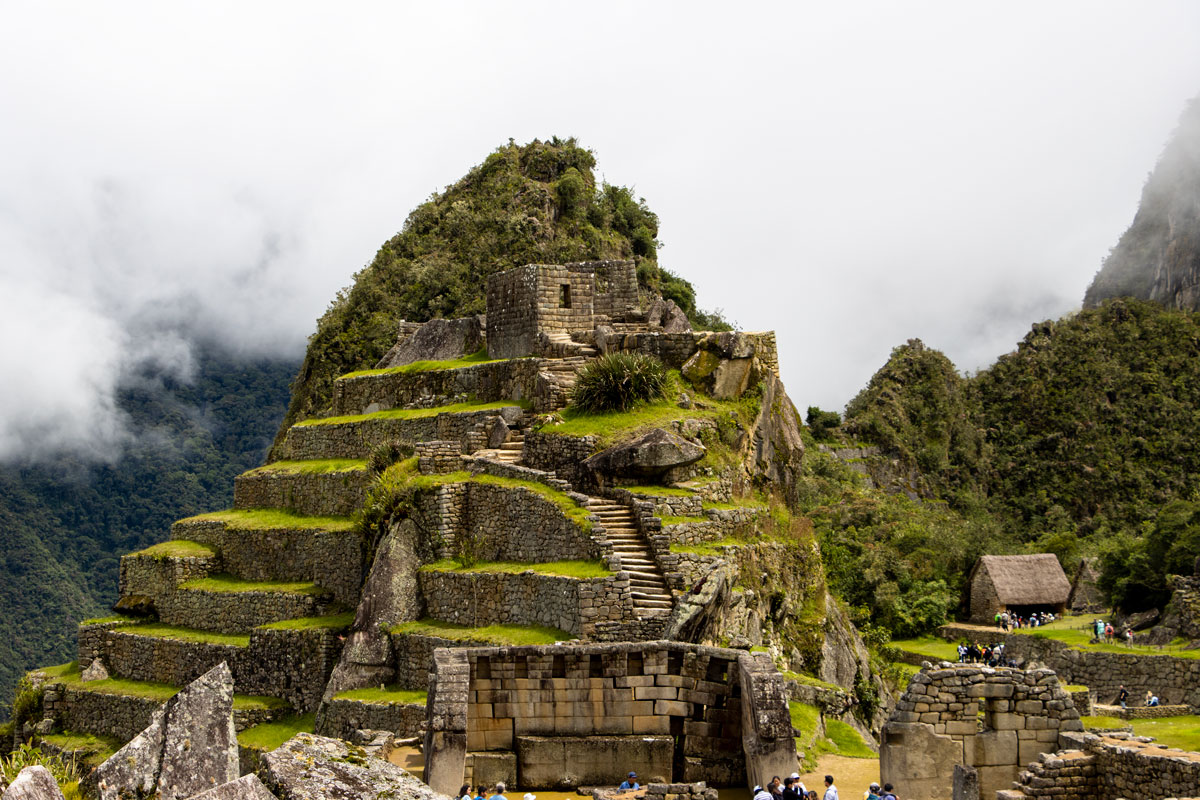 |
Who built Machu Picchu? |
World Heritage Site Machu Picchu became famous worldwide when the prestigious American magazine National Geographic Society dedicated an entire issue to the Inca wonder in 1913. Machu Picchu soon became a magnet for people from all over the world. To this day, the Inca city, which remains difficult to access, is one of the most popular tourist attractions in the world. Every year, hundreds of thousands of people make the long journey to the remote city in the mountains to experience its magic. Machu Picchu was declared a World Heritage Site in 1983.
Hiram Bingham is famous for his spectacular discovery. His notes are said to have inspired the movie character Indiana Jones.
Machu Picchu is considered one of the last Inca settlements. Protected by jagged rock walls, at the foot of which the untamed Urubamba River rushes through the dense jungle, the settlement lies on a remote plateau at an altitude of 2,430 meters. Without metal tools, wagons or mortar, the proud Andean people built more than 200 houses in the mid-15th century using precisely shaped stones stacked one on top of the other.
But why did they go to all this trouble? Was it a place of pilgrimage, a royal summer residence, or an administrative center? Anything is possible, but nothing has been definitively proven.
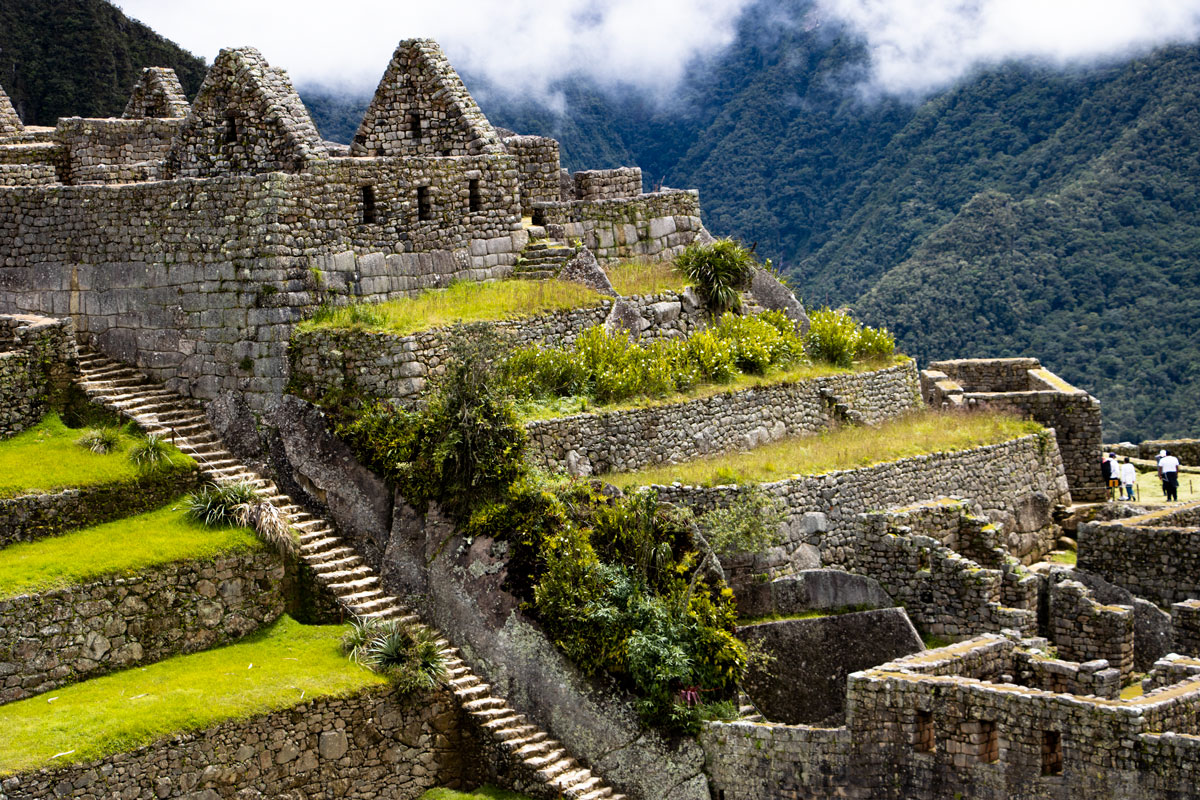 |
Peru Machu Picchu |
There are no surviving written records because the Incas did not have a writing system. Not even the original name of the settlement is known - today it is simply named after the mountain on whose ridge it sits. Recently, two scholars have concluded that the name "Machu Picchu" only took hold after its rediscovery by Hiram Bingham.
Until Bingham revealed the lost city to the Western world in 1911, it had remained hidden under twisted vines and layers of moss. Even the Spanish had failed to find Machu Picchu during their expeditions through the rugged Peruvian mountains. In doing so, they missed a unique opportunity to explore the great and small secrets of the Inca Empire-secrets that still exist in the site's intact irrigation systems, houses, and temples.
Can you imagine that the Incas built Machu Picchu without wheels? This means that they moved all the heavy stones from the quarries to the construction site without any mechanical aid.
Hundreds of men had to push stones - some weighing more than 50 tons - up the steep slopes. They did not use pack animals or iron tools, which were against their customs.
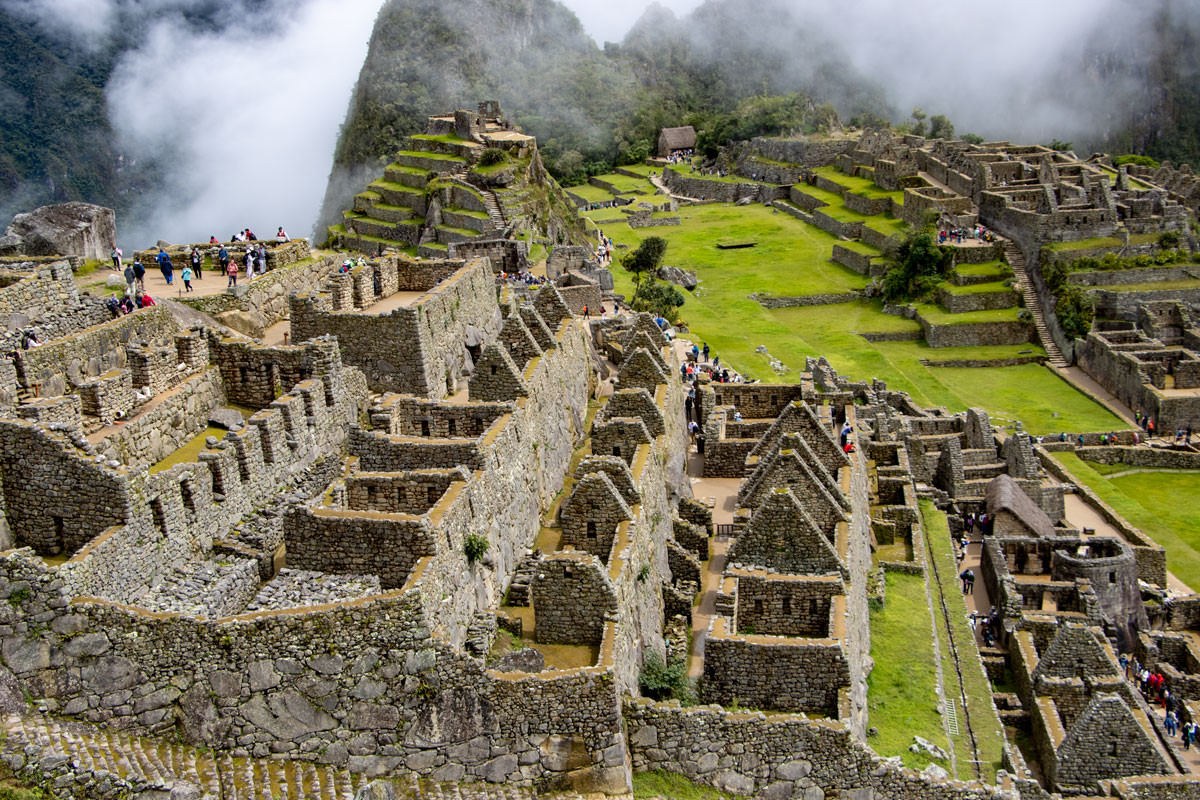 |
What is Machu Picchu |
Hiram Bingham's name is also associated with a long-running dispute over who rightfully owns the treasures of the Incas. The Peruvian government at the time had allowed the explorer to take the artifacts to the United States. The items excavated from Machu Picchu were displayed in a museum at Yale University. They were returned to Peru 100 years later after lengthy negotiations between the Peruvian government and the university.
Today, the pottery, jewelry, and skeletal remains from the lost Inca world are on display in a museum in Peru's capital.
In recent years, other museums have returned works of art and historical artifacts to their countries of origin. The question of how different countries deal with art objects that were looted or otherwise taken from their countries of origin in the past is still controversial today. Most of the discussions revolve around whether the art should be returned, or whether restitution should be made in some other way.
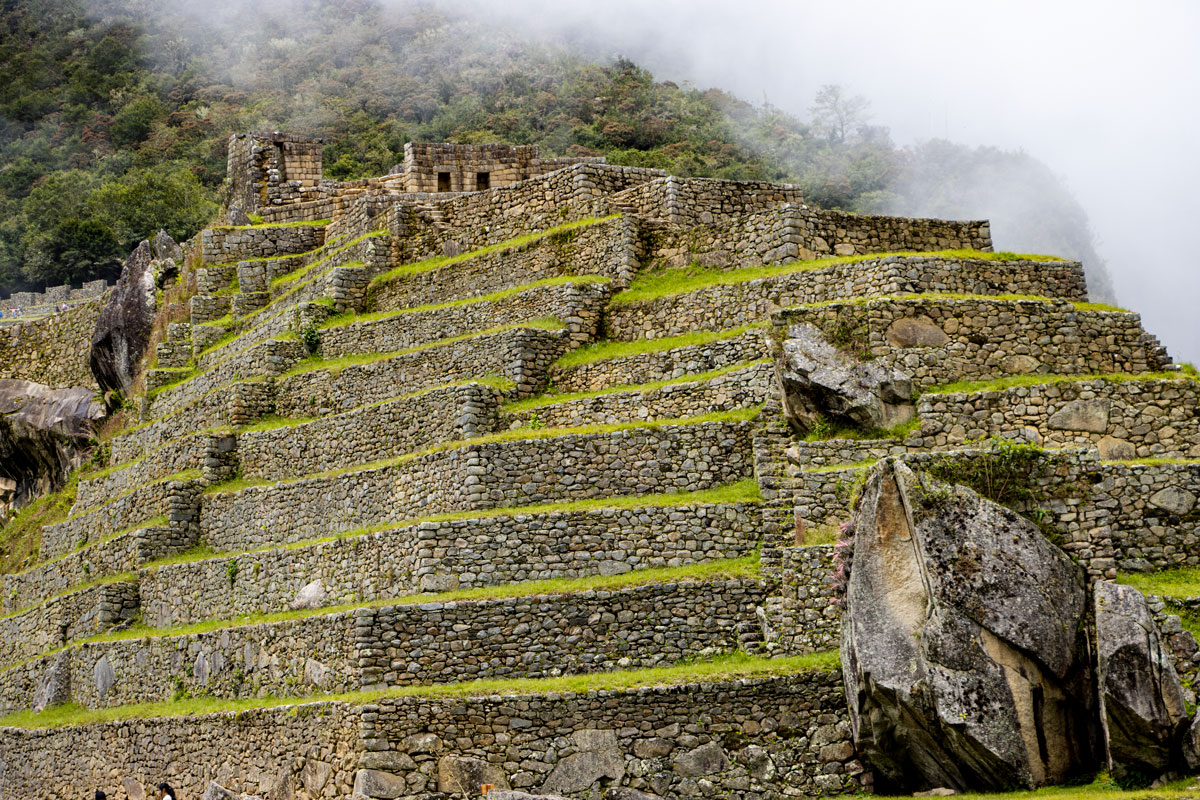 |
Machu Picchu in Peru |
A visit to the ancient Inca city of Machu Picchu is a must for most travelers to Peru. As a result, the famous ruins are often mercilessly overcrowded. To protect the UNESCO World Heritage Site, the government has restricted access for visitors.
Simply driving up and walking around Machu Picchu is no longer possible. If you want to visit the Inca city, which was built in the 15th century on a mountain ridge in the Andes, you need to plan your visit carefully and as far in advance as possible. The reason for this is that the maximum number of tickets that can be sold each day is limited, and the tickets are only valid for fixed times and a maximum stay of three hours.
Although it is possible to buy multiple tickets if available and visit Machu Picchu multiple times, with prices starting at $62 per ticket, this can quickly burn a hole in your wallet. Especially since there are usually additional costs for a tour guide and the bus transfer from Aguas Calientes (Machu Picchu Pueblo) to the Inca city at an altitude of 2,430 meters.
Most of the time, the weather at Machu Picchu is good. But unfortunately, it’s not always guaranteed. We'll show you the best and worst months for your Machu Picchu visit.
May, June, September, and October: Best time to visit.
July and August: Best time to travel, but since it's peak season, it's very crowded.
November and April: Although it's already the rainy season, the weather is usually good.
December, January, February, and March: Very rainy.
The dry season in the Andes and at Machu Picchu is from May to October. It rarely rains during this time, so the chances of good weather and sunshine are highest.
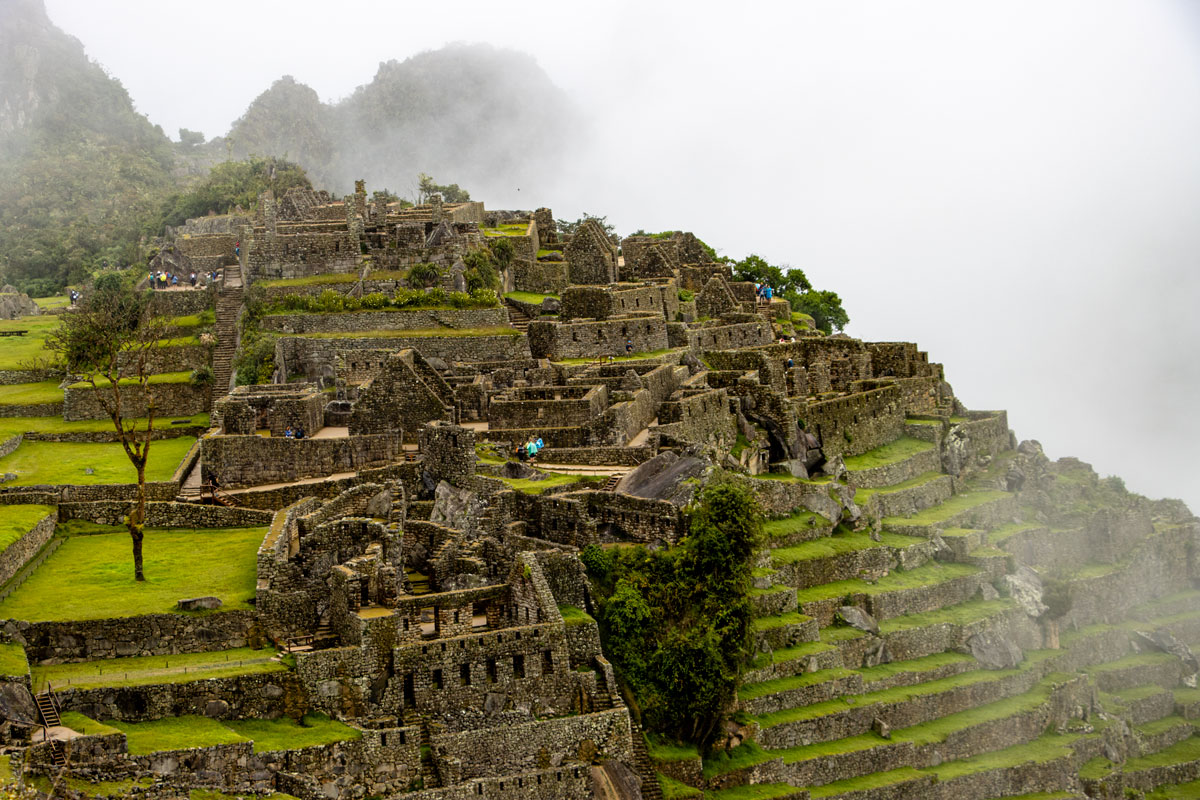 |
Machu Picchu City |
High season is in July and August. Machu Picchu is very crowded then, and tickets sell out early – it's difficult to get a ticket on short notice. Therefore, we recommend the off-peak months of May, June, September, and October for a Machu Picchu visit. Our tip: June is a great time to visit Machu Picchu!
Note: During the dry season, it's very hot at Machu Picchu during the day, and the sun blazes down. However, it cools down considerably at night.
The rainy season from November to April is less suitable for visiting Machu Picchu, as it rains frequently. Showers are still limited in November and April. From December to March, the rain can be quite heavy, so we don't recommend these months. February, in particular, is especially rainy.
We recommend you don’t miss the following points during your visit to Machu Picchu. These structures are like pages in a stone book that tell the story of engineering, astronomy, and history.
Here, Inca wisdom and sunlight meet to create shadows and alignments during the solstices. At Machu Picchu, Inca wisdom and sunlight align to create shadows during these special times of the year. The rocks were carved into a celestial clock and calendar, which helped plan the harvest.
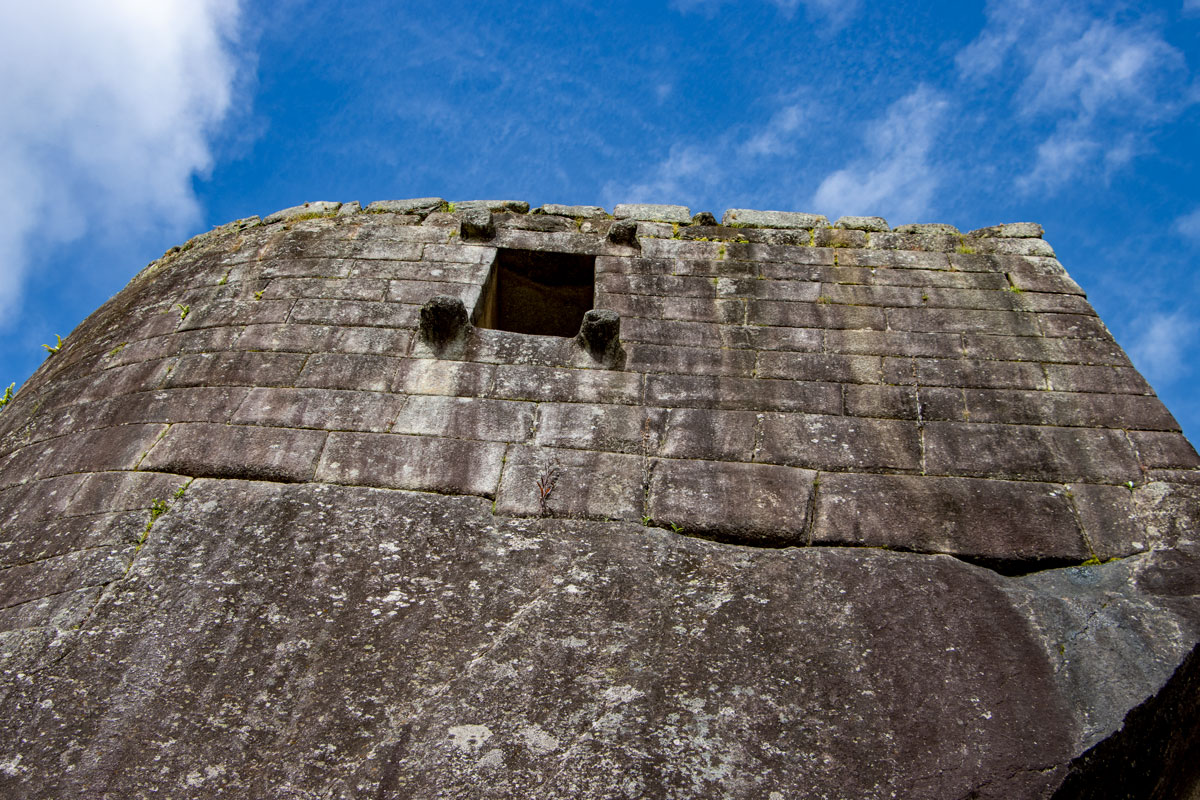 |
Machu Picchu: Temple of the Sun |
This sanctuary is carved into the mountain. Here, the moon becomes a deity that illuminates the path of pilgrims. It was a place of worship and contemplation.
This sacred place is believed to have served as a sundial. It was an altar where the Incas connected with the cosmos, “tying” themselves to the sun in its eternal cycle.
The windows of this temple represent the three worlds in the Inca worldview:
This is the mystical threshold of Machu Picchu. It offers one of the most iconic and spiritual views of the citadel. It was the gateway to the sanctuary from the Inca Trail.
Machu Picchu is home to two popular mountains that offer incredible views of the Inca citadel. In addition to the standard Huayna Picchu or Machu Picchu tickets, you can also purchase tickets for 200 soles that allow you to explore both the Inca city and climb either Huayna Picchu or Machu Picchu itself. Access to both mountains is limited, with strict visitor caps in place.
Only 400 people are allowed to climb Huayna Picchu each day, divided into two shifts. The first shift runs from 7am to 8am and the second from 9am to 10am. The climb to the top of Huayna Picchu, where you'll be rewarded with breathtaking views of Machu Picchu on a clear day, usually takes about two hours for people in average physical condition. The ticket allows a maximum stay of six hours.
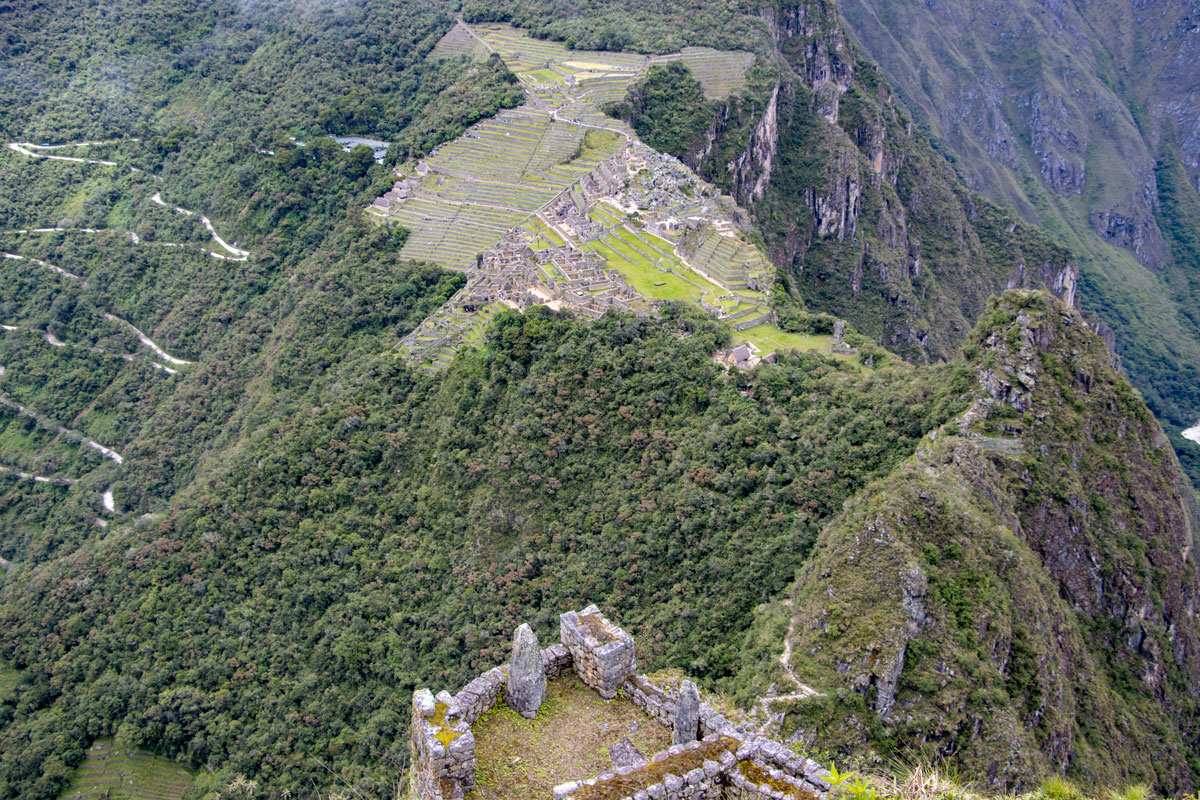 |
Machu Picchu: Huayna Picchu Mountain |
The Huayna Picchu trail is quite steep and takes about 1.5 hours to climb up and down - people who have trouble with vertigo may not enjoy this trek. There are some interesting archaeological ruins on the top of Huayna Picchu mountain. This is a difficult climb in the wet season as trails are muddy and slippery.
For those who wish to climb the majestic mountain of Machu Picchu, up to 800 visitors are allowed to climb the 3,061 meter peak each day. Similar to Huayna Picchu, the first shift starts between 7am and 8am and the second shift starts between 9am and 10am. The climb usually takes about three hours, and your ticket is valid for seven hours.
The hike is less popular than Huayna Picchu, but no less beautiful. Machu Picchu Mountain is located on the opposite side of the ruins from Huayna Picchu.
Machu and Huayna Picchu - the Great and the Little Mountain, as they are translated - tower over the landscape like gentle giants. Both peaks offer a view of the bigger picture that is hard to see from the ruins themselves. While Montaña describes the top of the ridge on which the Inca city sits, Huayna Picchu is the sugar loaf-shaped mountain that dominates the panorama of the city. From this somewhat remote vantage point, the dimensions and exposed location of the ruins become clear. Therefore, one of the two excursions is recommended for those who feel physically fit enough. Access to Montaña is much better and easier.
Those who want to try Huayna Picchu should have a head for heights and be comfortable at high altitudes. The path to the windswept peak follows an uneven pattern of steps and slippery paths. Occasionally, ropes or handrails provide some safety on steep passages. But one look down is enough to understand: one false step can be fatal. Because of past fatalities, some tour operators now advise against hiking to the top of Huayna Picchu. The Incas developed the inaccessible mountain with stairs, additional terraces, and houses lining the path. Historians believe that the buildings on the 2,720-foot Sugar Loaf were intended for the most important Inca priests. Those who make it to the top of Huayna Picchu will have Machu Picchu and the entire Urubamba Valley at their feet.
The quickest and most comfortable way to get to Machu Picchu is by train from the provincial towns of Cusco or Ollantaytambo in the "Sacred Valley of the Incas." Cusco is about 75 kilometers from Machu Picchu, while Ollantaytambo is only 32 kilometers away. The train journey from Cusco to Machu Picchu takes about three hours, while from Ollantaytambo, it takes one and a half hours. Providers of train services to Machu Picchu are Perurail and Incarail, which operate trains of various types and equipment on both routes.
Once you arrive in Aguas Calientes, buses run every few minutes from the town up to Machu Picchu. The eight-kilometer, winding journey takes just under half an hour. The sole provider of the bus service is the company Consettur.
Please note that waiting times for the bus can be up to several hours on both the outward and return journeys, depending on the number of visitors.
Alternatively, you can also walk from Aguas Calientes to Machu Picchu. However, the strenuous climb up the steep steps and/or along the winding road takes around two hours. The hike is not recommended in the rain, as the ground becomes soaked and the steps slippery.
There are other ways to get to Machu Picchu and Aguas Calientes. The journey by bus and cab via Santa María and Santa Teresa is considerably cheaper, but also much longer and more complicated. The starting point is Cusco. From here, you first take a bus to Santa María, which takes around five hours and costs about 10 US dollars. From Santa María, take a cab to Santa Teresa (about one hour, costing around 5 US dollars), and then take a colectivo (shared cab) to the Hidroelectrica train station. This journey takes about half an hour and costs around 2 US dollars. From Hidroelectrica, it is a two to three-hour walk along the railroad tracks to Aguas Calientes, depending on your fitness level. In total, the trip takes about nine to ten hours.
Another option for reaching Machu Picchu is a multi-day hike on the Inca Trail. The hike, which mostly follows the old Inca pathways over mountain passes, some of which exceed 4,000 meters in altitude, typically takes four days. The starting point is at kilometer 82 of the Cusco-Aguas Calientes railway line, not far from Ollantaytambo. Anyone attempting the Inca Trail should be a good hiker and have already acclimatized to the altitude. Since only 500 people are allowed on the trail per day, it’s advisable to book the tour well in advance. Alternative hiking routes include the Lares Trek and the Salkantay Trek.
Although leaving Peru without visiting Machu Picchu may not be an option for most people, there are alternatives. These Inca sites attract significantly fewer visitors. One such site is the ruined city of Choquequirao. Due to its similarity in structure and architecture, it is often referred to as Machu Picchu's little sister. Choquequirao sits on a high plateau at an altitude of around 3,000 meters in the foothills of the Salcantay mountain range, about 180 kilometers west of Cusco, and, like Machu Picchu, remained undiscovered by the Spanish.
Currently, Choquequirao is only accessible via a three- to four-day trek through the Andes. However, even here, tranquility may not last much longer. The Peruvian government plans to develop the site to help alleviate pressure on its famous counterpart. Until those plans are implemented, only about a dozen visitors per day are able to enjoy Choquequirao's seclusion.
If you have long time to visit Machu Picchu, you can do the hike to Machu Picchu such as Classic Inca Trail to Machu Picchu which is the most famous trek to Machu Picchu, in case there aren't any spaces available.